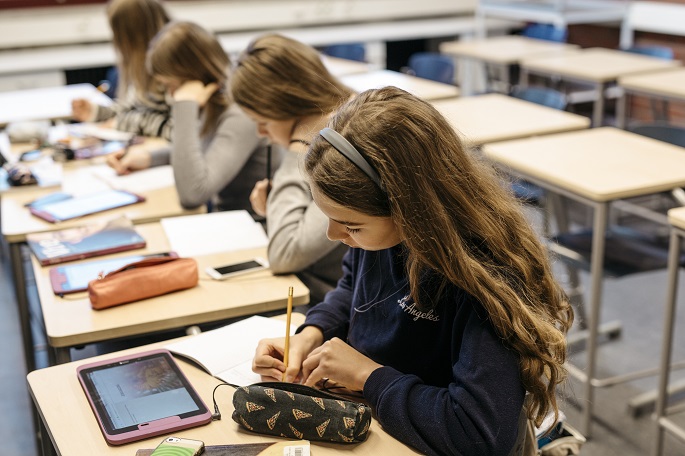Finnish students rank 2nd in PISA financial literacy
Published : 08 May 2020, 02:03
Updated : 08 May 2020, 09:21
With an average score of 537 points, Finnish young people were ranked the second best in financial literacy together with the youths of Canada (532 points) by the Programme for International Student Assessment (PISA) 2018, said the Ministry of Education and Culture in a press release.
The results of the PISA financial literacy assessments 2018 were published on Thursday in 20 countries.
The most financially literate youth were found in Estonia, where the statistical average of 547 points was significantly higher than the average of all other countries. The financial literacy assessment is an optional national assessment in the PISA survey. Finland participated in this assessment for the first time in 2018.
Of all the participating countries, Finland had the highest percentage of 20 of top performers at performance level 5. In Estonia (19%) and Canada (17%), the share of top performers was almost the same (OECD average 10%). At the same time, 2.4% of Finnish students fell below the lowest performance level of 1. Of the other highest performing countries, Estonia’s corresponding figure was a mere 0.7% (OECD average 4%).
In Finland, there is an even distribution of financial literacy between schools, and the differences between schools were the smallest in the entire assessment.
At the same time, however, the variation within schools was the largest, and clearly stronger than in reading literacy, for example. In other words, both the weakest and the strongest financially literate were found at the same school.
No regional or educational differences were observed. The average score in financial literacy skills of Finnish-speaking students was 538 points and that of Swedish-speaking students was 522 points.
The socio-economic background of students had the second largest impact on financial literacy in Finland among the reference countries. This was reflected in particular in the poor skills of students belonging to the lowest socio-economic quarter bracket and the strong skills of students belonging to the highest one.
In Finland, 89% of the 15-year-olds held a bank account of their own and 78% had their own bank or payment card. These were the highest percentages in the whole assessment. Young people’s inclusion in financial systems was linked to better financial literacy. In Finland, this was particularly manifested in a stronger link in the assessment between owning a bank account and financial literacy.
The ownership of a bank account and of a bank or payment card was linked to the socio-economic background of the student in all countries. In Finland, however, this link was weaker than the OECD average. On the other hand, on an average, significantly fewer Finnish immigrant students had a bank account or payment card than their counterparts in OECD countries.
A significantly higher percentage of Finnish students (71%) than the average of OECD students (50%) indicated that they obtained information about financial literacy from their teachers.
In the PISA 2018 survey, financial literacy was an optional, additional content area for the third time. In order to measure financial literacy, an additional sample was collected from among the 15-year-olds in the entire country. When the additional sample was combined with the basic sample, the assessment of financial literacy was obtained from 4,328 students of 214 schools.


